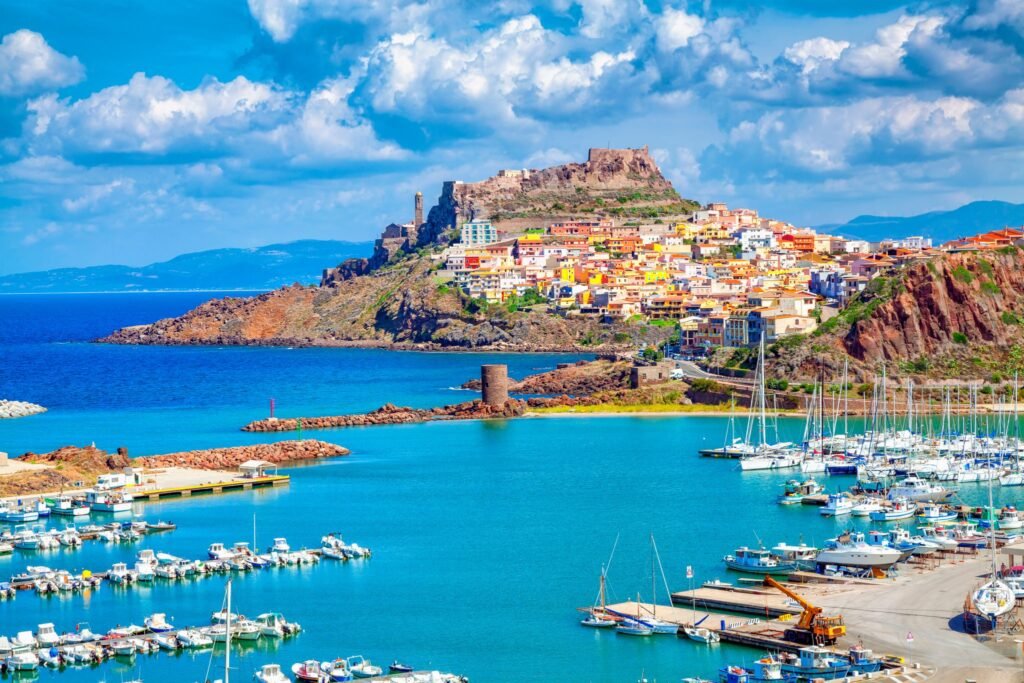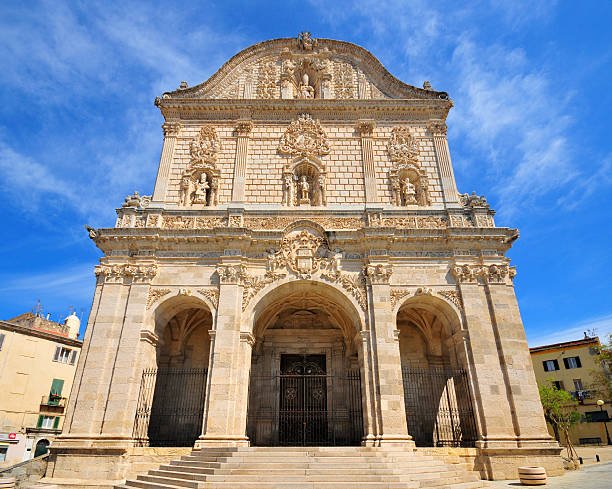Sassari is the second largest city in Sardinia. Which combines island tradition with the features of a modern resort. Sardinia is a perfect place to spend your holiday for sun-bathed, hot beaches and, of course, warmer and heavenly clear waters. In every medieval street you will find atmospheric restaurants and shops with traditional Sardinian products. The city also offers its picturesque center, a rich and wide spectrum of architecture: medieval, Romanesque, Gothic, Renaissance and baroque. This is a real treat for history lovers.

Access:
– By plane: There is an airport in Alghero.
– By rail: There is a train station here.
– By car: Sassari is an important road junction.
BEACHES:
Sassari boasts a variety of picturesque beaches. Spiaggia di Balai is known for its crystal clear waters and natural charm. Spiaggia di Ampurias offers scenic views and calm waters. Spiaggia Marina di Sorso, a public beach, is surrounded by a fragrant pine forest. Spiaggia di Platamona is significant for its extensive sandy coast. Spiaggia della Madonnina, on the other hand, is known for its shallow waters and convenient amenities. For a full list of beaches, check out our guide below.
- Ampurias Beach

- Marina di Sorso Beach

- Platamona Beach

- Madonnina Beach

SIGHTSEEING:
Prenuragic Sanctuary Monte d’Accoddi

Monte d’Accoddi is a Neolithic archaeological site in Sassari. The site consists of a massive raised stone platform that was intended to be an altar. It was built by the Ozieri culture or earlier, with the oldest parts dating from around 4000-3650 BC.
Nuraghe Santu Antine

Santu Antine, also known as Sa domo de su re, is a nuraghe in Torralba, one of the largest in Sardinia. It is located in the center of the Cabu Abbas plain. The main structure was built around the 19th-18th centuries BC, while the remaining parts of the nuraghe date back to the 17th-15th centuries BC.
Necropolis of Anghelu Ruju

The Necropolis of Anghelu Ruju is a pre-Nuragic archaeological site located in Sassari. It is the largest necropolis of pre-Nuragic Sardinia. The necropolis was accidentally discovered in 1903 during excavations for the construction of a house in the Sella&Mosca vineyard.
Piazza d’italia

Sassari’s largest piazza is one of Sardinia’s most impressive public spaces. Covering about a hectare, it is surrounded by imposing 19th-century buildings, including the neoclassical Palazzo della Provincia, seat of the provincial government and, opposite, the neo-Gothic Palazzo Giordano, now home to the Banca Intesa SanPaolo. Presiding over everything is a statue of King Vittorio Emanuele II.
St. Cathedral Nicholas

The Cathedral of St. Nicholas is the main church of the city of Sassari. It is located in the historical center, Piazza del Duomo.Commonly called Cathedral or Primatial, the temple is the seat of the chair of the Metropolitan Archdiocese of Sassari. Consecrated to St. Nicholas of Myra, the cathedral is also a parish church in the city.
Church of Saint Mary of Bethlem


Outside is rather simple, but it has a wonderful interior. The facade is from 13. century, Roman style, but it fied styles (e.g.Gothic), too. Beautiful carved, wooden altars and pulpit. The famous candlelight procession, „Candelieri” on 24th August starts and finishes here. It’s worth a visit.
Church of the Holy Trinity Saccargia

The Basilica of the Holy Trinity in Saccargia is a church in the commune of Codrongianos, it is one of the most important Romanesque monuments on the island. The structure is entirely made of local stone and has the typical appearance of the Pisa Romanesque style. The construction of the church was completed in 1116 on the ruins of a previously existing monastery, and consecrated on October 5 of the same year. It was entrusted to the Camaldolese monks who founded an abbey here. It was then enlarged in the Pisan style, including the addition of a high bell tower. The church was abandoned in the 16th century until it was restored and reopened in the early 20th century.
Rosello Fountain

n the Rosello valley, outside the ancient city of Sassari’s walls, under the bridge, there is the Rosello Fountain, at 1h30, 122 km from the Gabbiano Azzurro Hotel & Suites. It is it is a unique monument in all of Sardinia, an effective unique piece of history which, with an allegorical meaning, represents the passage of time in the city of Sassari, in which the months are represented by twelve mouths, called cantaros and the seasons from the four statues, at the base of which water flows from the mouths of four dolphins.
Sassari Civic Theatre


This elegant neoclassical building bears witness to events that have taken place in Sassari. Until 1826, the Palazzo di Città stood where the Civic Theatre is now located, overlooking the Platha de Cothinas (Piazza del Comune) that is no longer there, once the centre of the walled town and the current avenue of Corso Vittorio Emanuele II, still today, as in the past, the heart of Sassari. The precarious conditions of the medieval building and urban renewal in the early nineteenth century launched by King Charles Felix led to the construction of a new municipal building in Neoclassical style.
